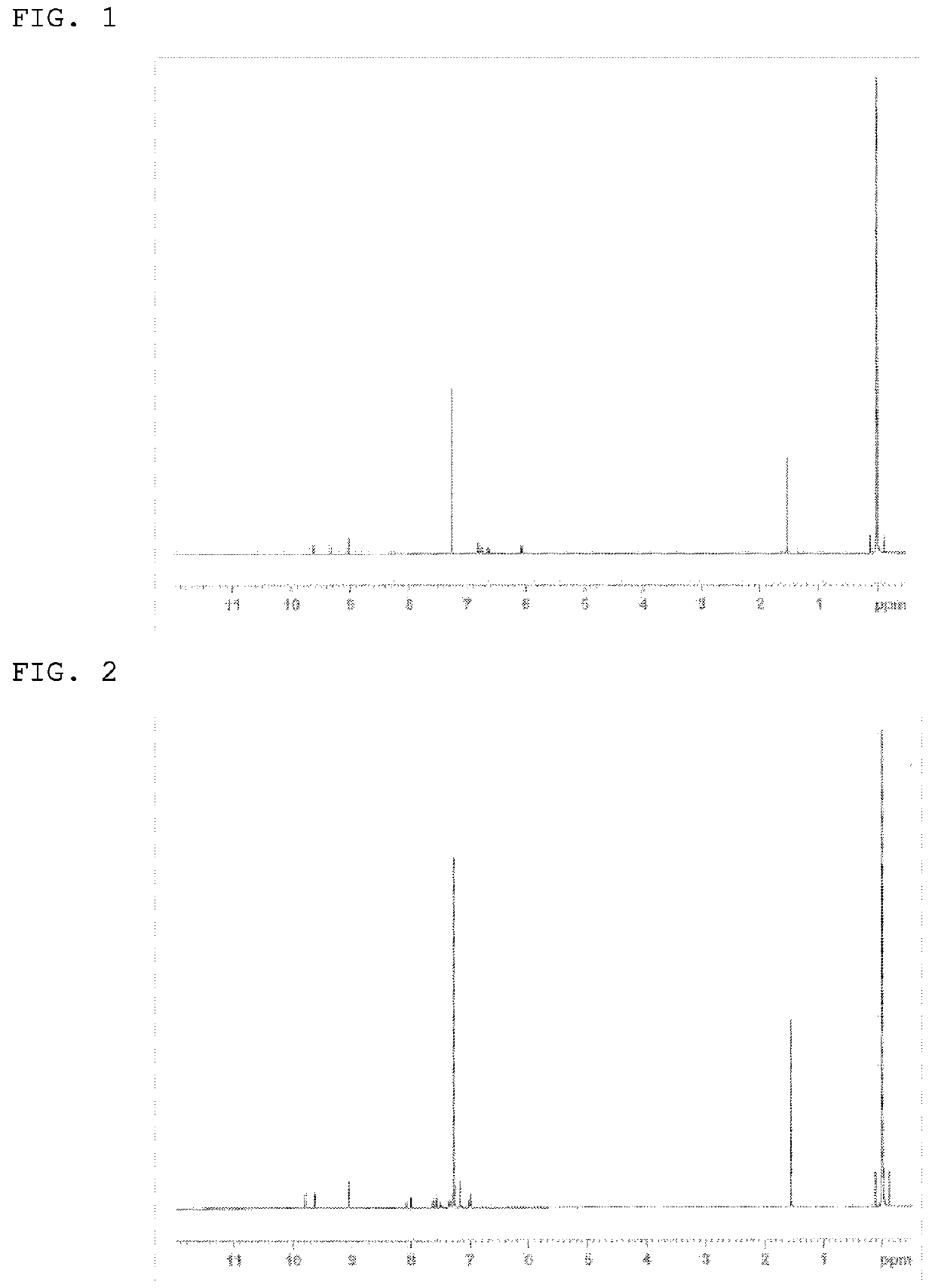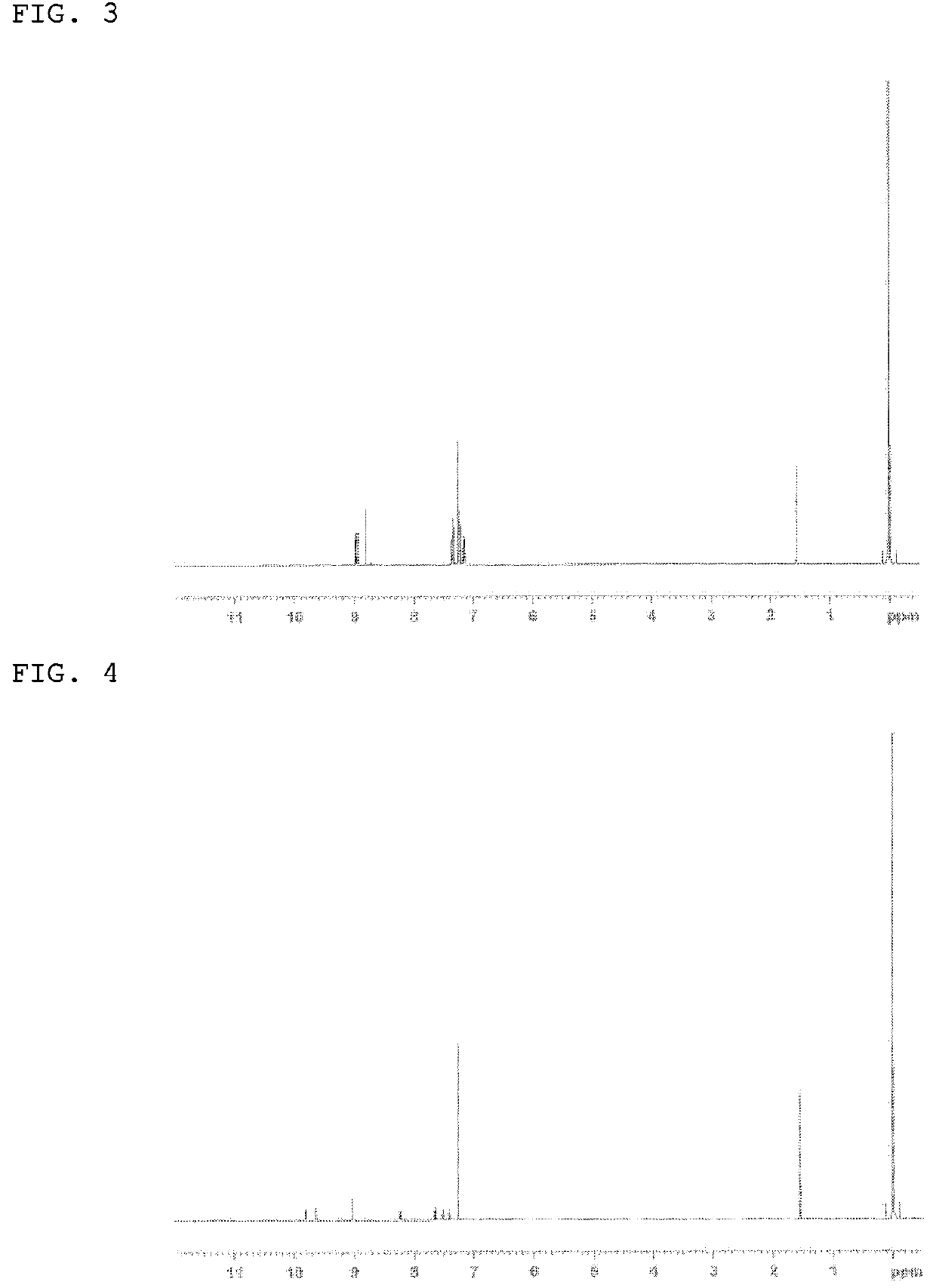Compound having tetraazatriphenylene ring structure, light-emitting material, and organic electroluminescent device
a ring structure and tetraazatriphenylene technology, applied in the direction of luminescent compositions, organic chemistry, chemistry apparatus and processes, etc., can solve the problem that in general, high quantum yield is not obtained in many cases, and achieve stable thin-film state, excellent heat resistance, and delayed fluorescence
- Summary
- Abstract
- Description
- Claims
- Application Information
AI Technical Summary
Benefits of technology
Problems solved by technology
Method used
Image
Examples
example 1
Synthesis of 6,11-bis(Phenoxazin-10-yl)-1,4,8,9-tetraazatriphenylene (Compound 1)
[0243]To a nitrogen-substituted reaction vessel were added 1,10-phenanthroline.monohydrate (22 g), disulfur dichloride (49 g), pyridine (30 mL), and 1-chlorobutane (300 mL), and bromine (57 g) was dropped while stirring the mixture. The mixture was then heated while being stirred, and heated to reflux for 6 h. A 18 M sodium hydroxide aqueous solution (300 mL), and chloroform (400 mL) were added after cooling the mixture to room temperature, and the mixture was stirred for 1 h at room temperature, and subjected to filtration using Celite as an auxiliary agent. Through extraction procedures, the chloroform layer was collected, and the solvent was evaporated after washing with saturated brine. The residue was then purified by column chromatography to obtain 3,8-dibromo-1,10-phenanthroline (yield 50%).
[0244]The product 3,8-dibromo-1,10-phenanthroline (10 g), and potassium bromide (5 g) were charged into a n...
example 2
Synthesis of 6,11-bis{3-(Diphenylamino)carbazol-9-yl}-1,4,8,9-tetraazatriphenylene (Compound 35)
[0250]The 6,11-dibromo-1,4,8,9-tetraazatriphenylene (1.0 g) synthesized in Example 1, 3-(diphenylamino)carbazole (2.0 g), sodium-tert-butoxide (0.6 g), tri-tert-butylphosphine (0.1 g), and xylene (60 mL) were added into a nitrogen-substituted reaction vessel. The reaction mixture was then deaerated while being stirred. The mixture was heated after adding a tris(dibenzylideneacetone)palladium.chloroform inclusion compound (0.07 g), and heated to reflux for 5 h while being stirred. After allowing the mixture to cool, methanol was added, and the precipitated crude product was collected by filtration. The precipitate was then purified by silica gel column chromatography to obtain a yellowish white powder of 6,11-bis{3-(diphenylamino)carbazol-9-yl}-1,4,8,9-tetraazat riphenylene (Compound 35; yield 10%).
[0251]The structure of the yellowish white powder product was identified by NMR. The 1H-NMR ...
example 3
Synthesis of 6,11-bis(Diphenylamino)-1,4,8,9-tetraazatriphenylene (Compound 4)
[0254]The 6,11-dibromo-1,4,8,9-tetraazatriphenylene (1.0 g) synthesized in Example 1, diphenylamine (1.2 g), sodium-tert-butoxide (0.6 g), tri-tert-butylphosphine (0.1 g), and xylene (60 mL) were added into a nitrogen-substituted reaction vessel. The reaction mixture was then deaerated while being stirred. The mixture was heated after adding a tris(dibenzylideneacetone)palladium.chloroform inclusion compound (0.07 g), and heated to reflux for 5 h while being stirred. After allowing the mixture to cool, methanol was added, and the precipitated crude product was collected by filtration. The precipitate was then purified by silica gel column chromatography to obtain a white powder of 6,11-bis(diphenylamino)-1,4,8,9-tetraazatriphenylene (Compound 4; yield 40%).
[0255]The structure of the white powder product was identified by NMR. The 1H-NMR measurement result is shown in FIG. 3.
[0256]1H-NMR (DMSO-d6) detected ...
PUM
 Login to View More
Login to View More Abstract
Description
Claims
Application Information
 Login to View More
Login to View More - R&D
- Intellectual Property
- Life Sciences
- Materials
- Tech Scout
- Unparalleled Data Quality
- Higher Quality Content
- 60% Fewer Hallucinations
Browse by: Latest US Patents, China's latest patents, Technical Efficacy Thesaurus, Application Domain, Technology Topic, Popular Technical Reports.
© 2025 PatSnap. All rights reserved.Legal|Privacy policy|Modern Slavery Act Transparency Statement|Sitemap|About US| Contact US: help@patsnap.com



